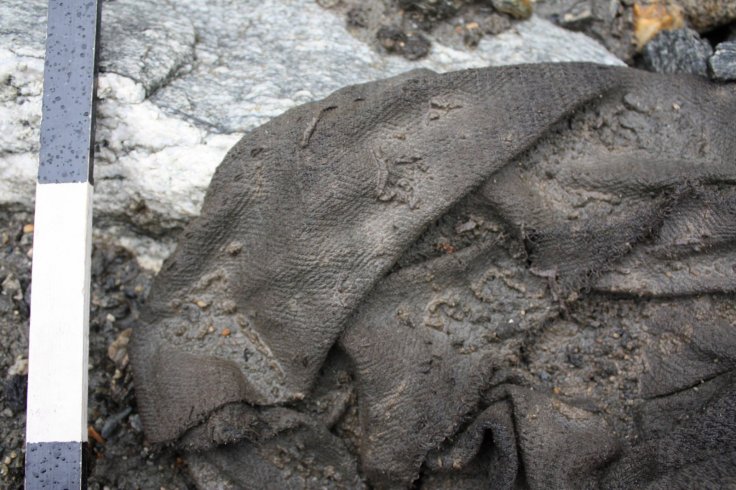Melting glaciers in Norway have revealed ancient artefacts -- clothes, tools, equipment and animal bone -- which were dropped by the side of a road that is more than 1,000-year ago. These artefacts were found by a team of researchers at a lost mountain pass at Lendbreen in Norway's mountainous region.
As per the team, over 100 artefacts discovered at the site also include horseshoes, a wooden whisk, a wooden needle, a walking stick, a mitten and a small iron knife.
Archaeological finding in Norway mountain
It should be noted that the team also found a frozen skull of a horse which used to carry loads and died in the region. It was revealed that the objects which were covered in ice, the pass was used in the Iron Age, from around AD 300 until the 14th century.
Even though the environmental activists and environmental experts are concerned about climate change, the environmental changes helped scientists to find a new place to conduct an archaeological excavation.
As per the researchers, the pass peaked around AD 1000 and declined after the black death in the 1300s, due to economic and climate issues. The recent findings are evidence of high-altitude travel in the Roman Iron Age and the Viking Age.

Lars Pilo, first author and co-director for the Glacier Archaeology Program said, "A lost mountain pass melting out of the ice is a dream discovery for us glacial archaeologists. In such passes, past travellers left behind lots of artefacts, frozen in time by the ice."
In addition, Pilo revealed that all these well-preserved artefacts of organic material have great historical value. While describing the decline he also mentioned that along with economic and climate change and it was caused by late medieval pandemics, which also include Black Death. He added, "When the local area recovered, things had changed and the Lendbreen pass was lost to memory."
Archaeological findings
Some of these artefacts are the remnants of daily life, such as a knife with a wooden handle, a wooden distaff, which was used to hold wool during hand spinning, and a wooden whisk. The remains of clothing, including shoes, a Roman Iron Age tunic and a Viking Age mitten were also discovered at the site. Espen Finstad, co-author and co-director of the Glacier Archology program revealed that "it is like they were lost a short time ago, not centuries or millennia ago."
Radiocarbon dating was used on 60 items to understand exactly when the pass was in operation. The researchers understood that the pass was used for local traffic to and from summer farms at high elevations and for long-distance travel and trade operations. The route was also used in late winter or early summer when the terrain used to cover in snow.
Climate change is melting glacial ice in #Norway revealing hundreds of amazingly well-preserved #Viking & other historical artifacts on the route of an long-lost ancient mountain pass âž¡ï¸ https://t.co/IsAEm9DG90@brearkeologi #glacier #ClimateChange #Lendbreen pic.twitter.com/gLcenNBxAY
— PlanetSKI Snow News (@planetski) April 17, 2020
Researchers said some of these objects may have ended up outside Norway that include reindeer antlers and pelts, skin and fur of the animal used for warmth. There are also dairy products and fodder to maintain livestock, used in winter season mainly for local use.
According to Professor James Barrett at the Department of Archaeology at the University of Cambridge, the radiocarbon dating showed that the traffic through this route "started in the Roman Iron Age around AD 300, peaked in the Viking Age around AD 1000 and declined after this. The start around AD 300 was a time when local settlement activity was picking up."
He further said, "When the use of the pass intensified around AD 1000, during the Viking Age, it was a time of increased mobility, political centralisation and growing trade and urbanisation in Northern Europe. Instead of just being considered remote regions, mountains could also provide vital access to important products and arteries for transporting such products, linking the mountain regions to larger trading networks."
The remains of horses that died during the crossing of the ice have also been dated as early as fifth and sixth century AD.









